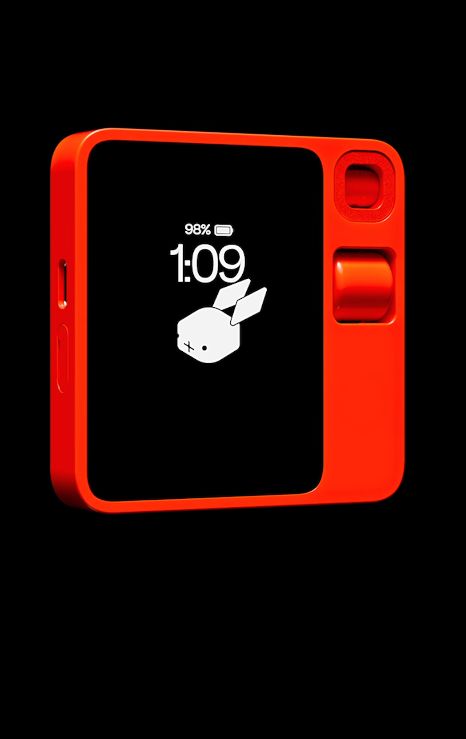With the integration of generative artificial intelligence (AI), we are entering a new era in the way we interact with these devices, in addition to making ourselves more productive with compact and powerful equipment.
According to the criteria of
It is important to clarify that AI has been present in our mobile devices for a long time, in many of the applications we use. However, we are now faced with a new subset: generative artificial intelligence, also known as IAG or ‘gen AI’.
According to technology company IBM, generative AI is capable of “creating original content, such as text, images, video, audio or software code, in response to a user’s instruction or request.”
Among the best-known generative AIs worldwide are:
- ChatGPT
- DALL-E
- Stable Diffusion
- Midjourney
Large market-leading companies, such as Samsung and Apple, are at the forefront of this revolution, implementing this technology in their devices to offer new and more powerful functionalities.
For example, the South Korean company, in collaboration with Google, announced Galaxy AI, its set of AI-based features, in January of this year.
Behind them are advanced models such as Gemini Pro and Ultra, designed to perform complex tasks. In addition, they have implemented Gemini Nano, an optimized version with fast response for basic tasks, such as image interpretation and summaries.
This technology is already a reality and is expanding to devices that have been on the market for some time. Currently, Galaxy AI is available in the S line from S21 to S24, in foldable phones from Z Fold3 to Z Fold5 and from Z Flip3 to Z Flip5, in addition to the Galaxy Tabs S8 and S9 tablets.
These are some of the products in the Colombian market that already have Galaxy AI.
Photo:Samsung
How will AI change Apple’s iPhones?
Apple, for its part, is preparing a package of new features based on generative AI, including a significant update to Siri, its virtual assistant.
This update will allow users to navigate between documents, photos and emails simply with voice commands. These functions, Announced under the name Apple Intelligence on June 10 at the WWDC developer conference, they will be available to the public in the fall of 2024.
In his announcement, Apple CEO Tim Cook noted that his approach “combines generative AI with each user’s personal context to deliver truly actionable intelligence. Plus, you access that information in a completely private and secure way to help you do what matters most to you.”
Screenshot of the WWDC 2024 broadcast featuring Tim Cook just before presenting Apple Intelligence.
Photo:Manzana
Operation and implications of AI on cell phones
Although what is behind generative AI is as complex as it is wonderful (thousands and thousands of calculations in a matter of seconds, trying to give the best answer based on millions of data obtained from texts, images, codes and numbers to the query made by a person), Generative AI is not exclusive to tech experts; it is designed to be accessible to everyone. Simply use language or draw a doodle on the screen to access it.
In general terms, Generative AI in cell phones has focused on offering solutions such as correcting and adjusting tones in texts, summaries of large volumes of information, editing photographs, transcribing audio and generating ‘stickers’ or emojis.
For its part, Samsung has opted for real-time translation, both in person and via phone call, and the generation of frames to convert a conventional video into a slow-motion one.
Mario Laffitte, Vice President of Corporate Affairs for Latin America at Samsung
Photo:Samsung
Mario Laffitte, Samsung’s Vice President of Corporate Affairs for Latin America, began his career at the company in 2013. Since then, he has witnessed first-hand the company’s innovations, such as the fingerprint and iris readers, and foldable screens.
When asked if he believes that these generative AI tools will reach all users, regardless of the capacity of the cell phone, he answered:
“No, technically it is not possible because artificial intelligence needs advanced processing capacity. There are surely mid-range models that will not be able to support the demand of artificial intelligence. on account of the technical capacity of the team.”
For this reason, Companies adopt an approach that combines native and cloud computing.
In the case of Samsung, as clarified in the Galaxy AI launch day document, the company uses Google Cloud services for the advanced models, responsible for processing and generating texts in the Notes, Voice Recorder and Keyboard applications. from Samsung, and editing images in the Gallery application.
While basic tasks are handled locally on the device with Gemini Nano, such as transcribing voice memos.
The implications of this approach are significant. Native computing improves speed and efficiency by reducing latency and dependence on a constant internet connection, while cloud computing allows you to take advantage of more powerful and complex AI models without overloading the device’s hardware.
However, a necessary question arises: what happens to our data?
Data privacy
Data privacy is a critical concern in implementing generative AI. Just look at all the controversy that Meta, owner of Facebook and Instagram, among other platforms, sparked by announcing that it would train its models with images published by users in Europe on their social networks.
Following a request from Ireland’s privacy regulator, the company paused its attempt, although it reiterated that it remains “very confident that our method complies with European laws and regulations”, reaffirming its plans.
The discussion is not minor, especially when we talk about cell phones, those devices that we carry everywhere, even to the bathroom, and that record all our information, including our biometric data when we pair them with a smart watch.
To do this, Apple has introduced Private Cloud Compute, servers whose hardware is manufactured by itself, allowing, in the company’s words, “to ensure that data is never retained or exposed.”
For its part, Samsung, through its configuration panel, allows the user to choose to process information only on the device. Besides, For companies, it allows Knox to block certain functionalities so that employees cannot use cloud-based generative AI.
“We are very attentive to international regulatory issues. Even before specific regulations existed, we already had our globally recognized protocols, such as Samsung Knox, which focuses on data security at the hardware level. The data is protected in the Samsung chip. The security software layer is applied later, when the information is transmitted,” says Laffitte.
The transformations that we are beginning to see in the market
For years, we have been talking about batteries, cameras and processors, especially in terms of CPU and GPU, which partly determine performance and graphic quality.
Before the rise of generative AI, we discussed ray tracing technology in video games, how it improved on-screen realism, and how these powerful GPUs could deliver smoother visuals, increasing frame rates per second.
Now, With the arrival of AI models optimized to run natively on cell phones, Neural Processing Units (NPU) are becoming relevant.
NPUs are specialized processors designed to run deep learning algorithms and other AI tasks with higher speed and lower power consumption.
Representation of a Snapdragon 8 Gen 3, the processor used in phones like the Samsung Galaxy S24.
Photo:Qualcomm
In the future, it is expected that mobile phone technical specifications will include details about the capabilities of their NPUs, becoming a new standard for evaluating the performance of these devices.
Regardless of the form factor (whether it’s foldable, wider or elongated), it could also change the way we interact, leaving the touch paradigm behind and embracing voice.
This is one of Apple’s promises with its new Siri: that we can navigate our device, consult information from different sources or perform various actions in our applications just by speaking.

Image of the Rabbit R1. In black, its small screen. The cylinder seen on the right is a mechanism to move up and down in the menu. The box on top is a camera that can be rotated to face backwards and forwards.
Photo:Rabbit
A device that has also generated a lot of attention is the Rabbit R1, a small cell phone focused on voice interaction. It has a screen of only 2.88 inches and Its operating system implements a model called the ‘Large Action Model’, which can theoretically interact with hundreds of web pages and applications to fulfill user requests. However, at the moment there is an abundance of criticism from dissatisfied people online.
“I think there is a lot of potential for developing interfaces. Personally, I prefer text-based interfaces, but that is just my opinion. We are very attentive to the public’s demands, and voice interfaces are becoming much more popular and convenient. Where will the screen be in the future? It could be in the lenses of our glasses, in contact lenses… I don’t know, but functionality will still be crucial,” concludes Laffitte.
Finally, what is little talked about, but which can mark the course of the democratization and appropriation of generative AI in cell phones is Who bears the cost of cloud computing. Today it is free and without limits for the user, but it cannot be ruled out that this could change in the future.
To solve this problem, the industry has several avenues open to it, in addition to achieving more powerful processors. One, finding more and better models that can run efficiently and quickly on the device. Two, charging a kind of subscription to use certain services. Three, limiting the use of functionalities, as ChatGPT does, which after a number of queries (even after paying the subscription), blocks access to its most advanced models.



